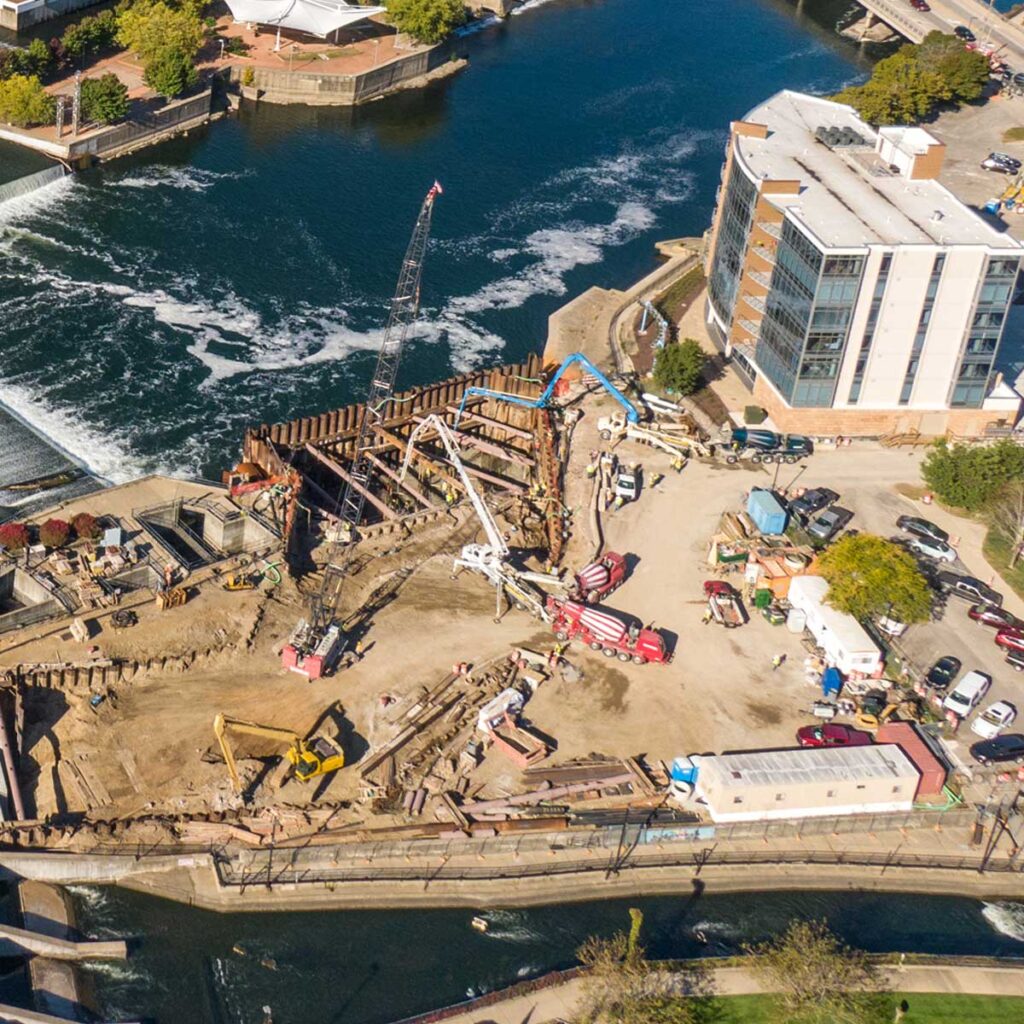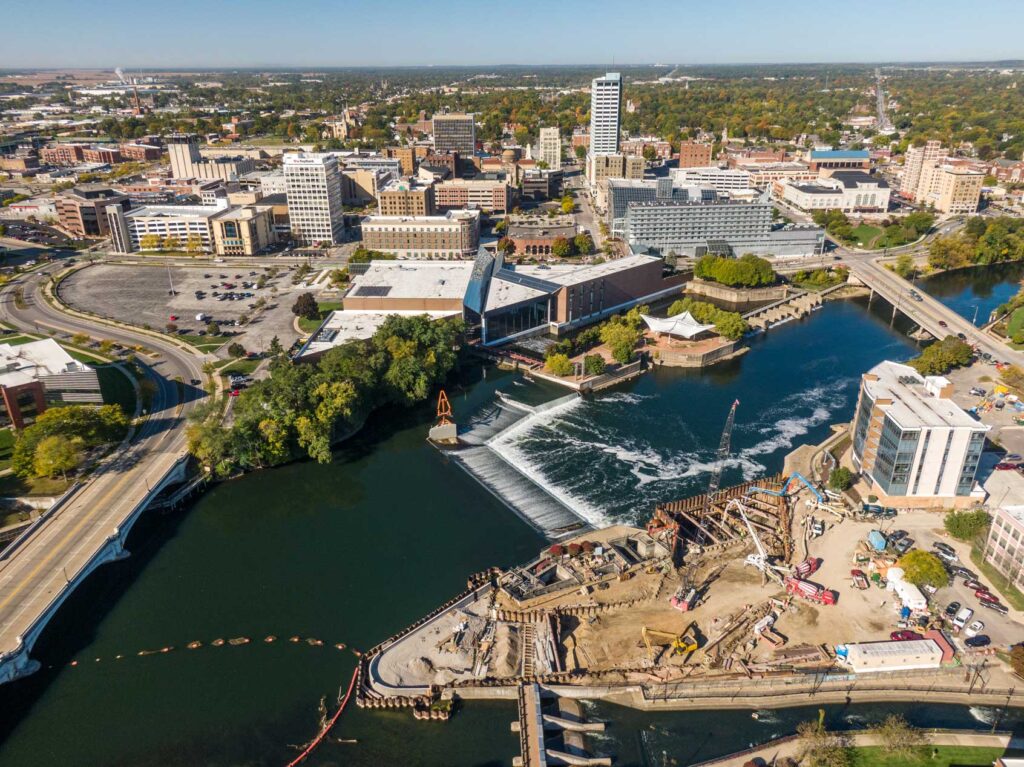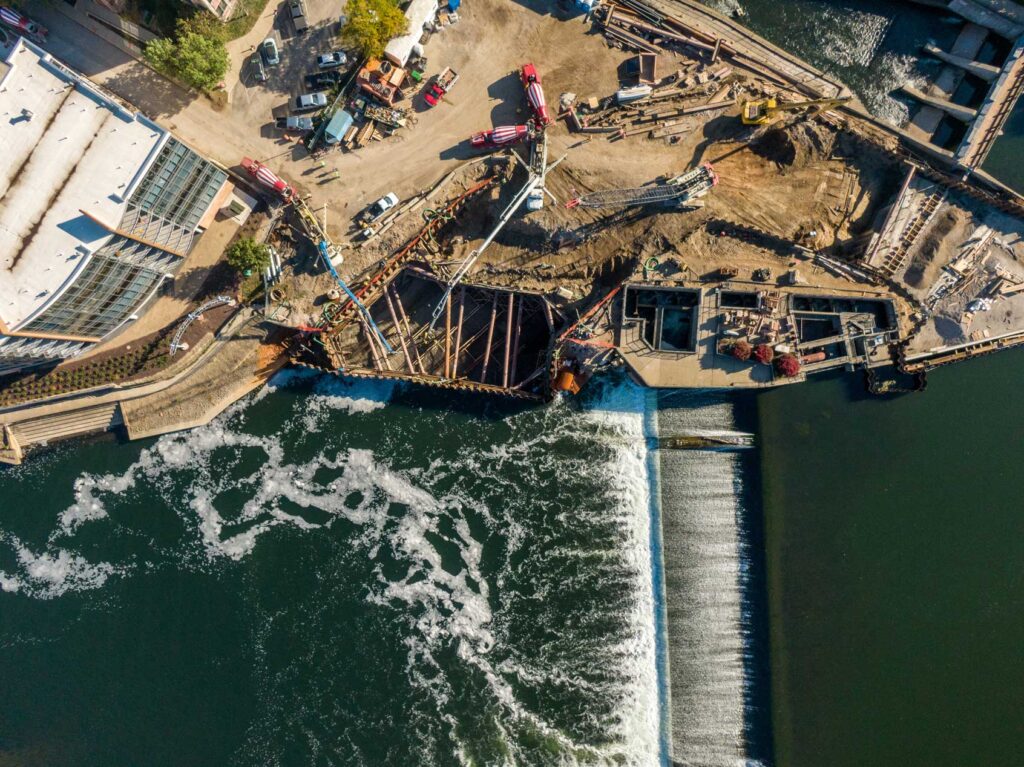Rieth Riley Solution
Let's leave a lasting legacy by making concrete more sustainable.

In 2015, the University of Notre Dame renewed a commitment to reduce their carbon emissions in an effort to become better stewards of the Earth. Their plan is designed to cut its carbon footprint in half by 2030. The St. Joseph River dam in downtown South Bend will be one of the major contributors to this initiative by capturing the energy of falling water to generate electricity and power the campus. In order to fully utilize the river, Rieth-Riley Construction Company, along with a network of architects, engineers, and excavators, were tasked with building an underground 2.5 megawatt hydroelectric facility that will offset nearly 9,700 tons of carbon dioxide annually.
Requiring years of intricate planning, one of the most intimidating challenges Rieth-Riley faced was finding a concrete mix-design that would not only advance the University of Notre Dame’s sustainability efforts, but also be durable enough to withstand the power of the river. In the construction industry, there tends to be a misconception that sustainable mixes require more money, more time and are less durable. This project required a never-been-done before mix that would prove that misconception wrong. Rieth-Riley and Ozinga partnered up for the challenge.

This sophisticated mix would require a very low water-to-cement ratio, a viscosity modifier to ensure cohesiveness and a large slump that would be workable and pumpable in combination with the steel rebar, without exceeding budget. Over the course of three years in quality control, research and development, Ozinga tested and designed a mix meeting all strict temperature, strength, durability and cost requirements. Containing 8,000 PSI concrete with 80% cement replacement, this mix possessed the exact right workability to be pumped 50 feet underground while never exceeding 160 degrees.
“The long-lasting performance of this concrete was very critical, and we were missing that piece of the puzzle to actually make this project feasible,” said Ruben Alvarado, sales manager of Rieth-Riley Construction Co. “That’s where Ozinga came in. Nobody else wanted to tackle it. When we approached Ozinga, they had no issue. They had the solution right away and they have not stopped helping us. They’re constantly jumping in there with us with solutions.”

This project, expected to be completed by the summer of 2022, will bring clean, renewable energy to the University of Notre Dame and have everlasting impacts on the environment. To date, the University has reduced its carbon emissions by 49 percent, and that number will continue to grow. Taking on this project was no small feat, but Rieth-Riley and Ozinga share the aspiration to leave a positive impact that will last for generations and valued the opportunity to participate in a project that would do just that.
